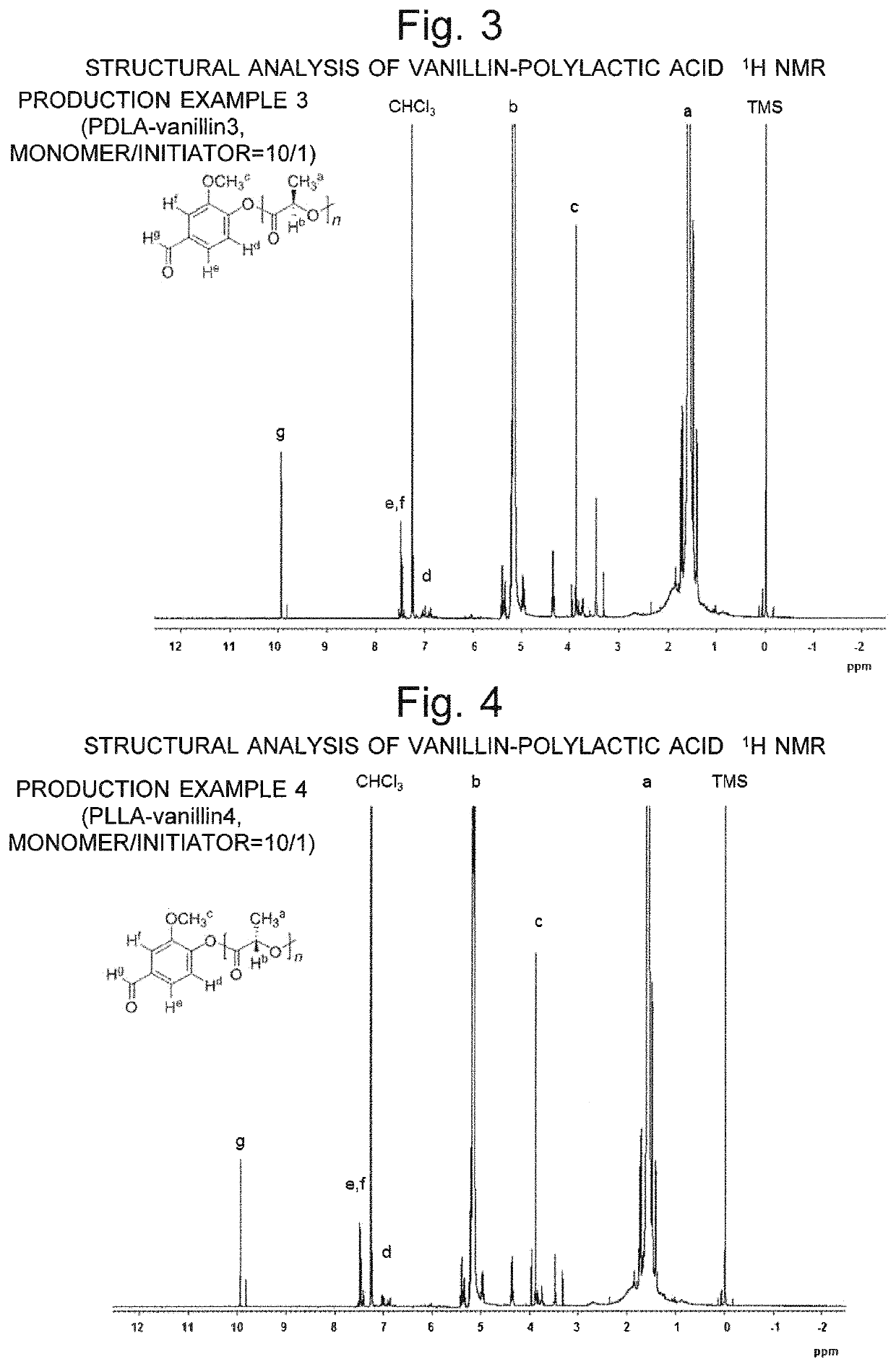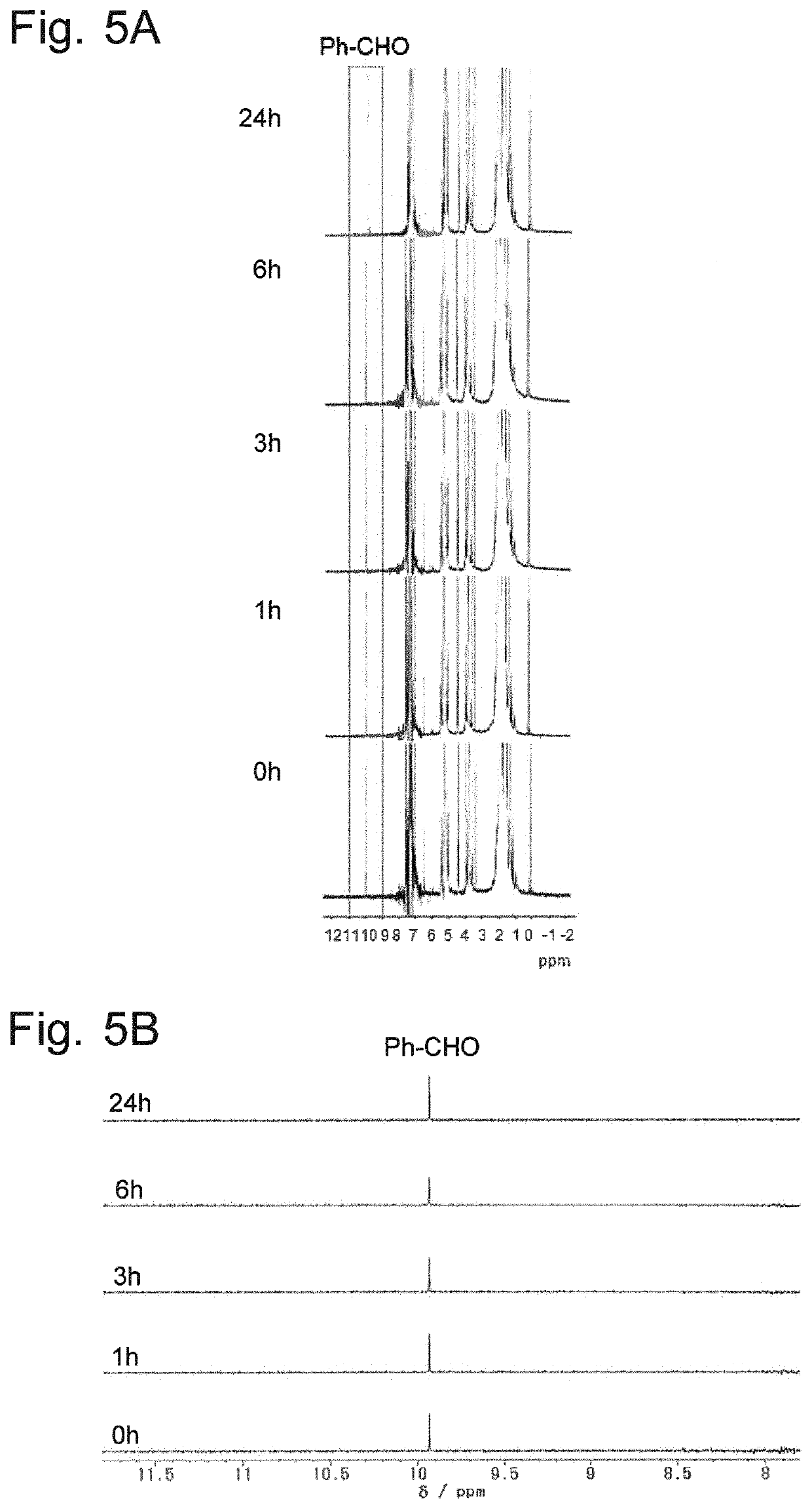Polylactide derivative, method for producing same, and polylactide stereocomplex
a polylactide and derivative technology, applied in the field of polylacite derivatives, can solve the problems of lower thermal resistance and mechanical strength of polylactide, and achieve the effects of high melting point, high pyrolysis temperature, and high heat resistan
- Summary
- Abstract
- Description
- Claims
- Application Information
AI Technical Summary
Benefits of technology
Problems solved by technology
Method used
Image
Examples
first embodiment
vatives
[0079]Polylactide derivatives according to the first aspect of the present invention are expressed by the following general formula (1) or (2):
[0080]
[0081]In general formula (1), one of X1-X5 is an aldehyde group, one of the other four is an alkoxy group, and the other three are hydrogen atoms.
[0082]
[0083]In general formula (2), one of R1-R3 is selected from the chlorine atom, fluorine atom, aldehyde group, alkoxy group, alkyl group and ester, while the other two are selected from the chlorine atom, fluorine atom, aldehyde group, alkoxy group, alkyl group, ester, and hydrogen atom. In particular, it is preferable that at least R3 be selected from the chlorine atom, fluorine atom, aldehyde group, alkoxy group, alkyl group and ester.
[0084]Among the polylactide derivatives expressed by general formula (1), those which have a methoxy group as X1, aldehyde group as X4 and hydrogen atoms as X2, X3 and X5 are expressed by the following formula (3). Similarly, among the polylactide d...
production example 5
[0095]As Production Example 5, a polylactide which contains both L- and D-lactic acids was synthesized, and vanillin was introduced at a terminal of the synthesized compound. Specifically, using (L,L)-lactide and (D,D)-lactide as the monomers (M1, M2) and vanillin as the initiator (I), 0.5 g of (L,L)-lactide and 0.5 g of (D,D)-lactide as well as a required amount of vanillin (I) were introduced into an ampule tube so that the molar ratio (M1 / M2 / I) of the monomers (M1, M2) and initiator (I) would be 10 / 10 / 1. Then, the gas inside the tube was replaced by nitrogen. Subsequently, 2.2 mL of toluene solution of Sn(Oct)2 prepared at a concentration of 1 mol % was added, and the tube was heated in an oil bath at a temperature of 120° C. for two hours to promote the polymerization of (L,L)-lactide as well as that of (D,D)-lactide. The reaction mixture was dissolved in 10 mL of chloroform, which was subsequently put in 200 mL of methanol, and the reprecipitated methanol-insoluble part was col...
production example 6
[0096]The methanol-insoluble part was collected under the same conditions and through the same procedure as described in Production Example 1. The yield was 88%. The methanol-insoluble part obtained in Production Example 6 may be hereinafter called the “PLLA-vanillin 6”.
PUM
| Property | Measurement | Unit |
|---|---|---|
| temperature | aaaaa | aaaaa |
| size | aaaaa | aaaaa |
| length | aaaaa | aaaaa |
Abstract
Description
Claims
Application Information
 Login to View More
Login to View More - R&D
- Intellectual Property
- Life Sciences
- Materials
- Tech Scout
- Unparalleled Data Quality
- Higher Quality Content
- 60% Fewer Hallucinations
Browse by: Latest US Patents, China's latest patents, Technical Efficacy Thesaurus, Application Domain, Technology Topic, Popular Technical Reports.
© 2025 PatSnap. All rights reserved.Legal|Privacy policy|Modern Slavery Act Transparency Statement|Sitemap|About US| Contact US: help@patsnap.com



